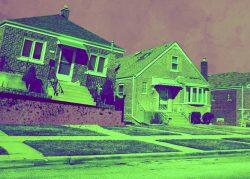Chicago housing prices are getting hit harder than they have in a decade by rising interest rates.
Data from Illinois Realtors found that the median price of a home sold in Chicago last month dropped more than 6 percent from the same time last year, Crain’s reported. The decline is the steepest tumble Chicago home prices have taken since November 2011, when the housing market was recovering from the Great Recession’s housing crash and foreclosure crisis.
Suburban properties painted a rosier picture of the market with slight price growth, yet the weakest increase since pandemic-fueled boom in values. For the larger nine-county Chicago metropolitan area, the median price of homes sold in November rose by a little more than 1 percent from last year to $295,000. That marks the smallest increase since May 2020, when market’s had taken a pause right as the pandemic started. Before that, price growth hadn’t been as low since September 2019.
The median price is the exact middle point between the highest and lowest sale prices so the still-strong luxury market is helping to boost that stat. As interest rates creep higher to battle inflation, slowing the overall housing market, the top end of Chicago’s single-family residential market has stayed consistent.
The number of homes sold in both the city and greater metropolitan area also dropped significantly. Only 1,522 homes in the city of Chicago sold in November, which is the lowest number in more than a decade. Sales were down by more than 36 percent year-over-year in the city and 35 percent in the larger area. The steep drop aligns with the nationwide number of homes sold dropping by 35.4 percent last month.
This year’s strong start helped to offset some effects of the slipping housing market, and at least boost 2022 sales above pre-pandemic years. By the end of November, 26,772 homes in the city of Chicago sold year to date, which is over 4 percent more than the 2017-2019 average. In the larger region, though, the 106,416 of sales are tracking slightly lower than the mean for the three-year pre-pandemic period by about 1 percent.
Read more

— Victoria Pruitt
